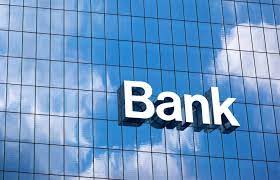Development banks are financial institutions that focus on providing long-term financing and support for economic development projects. They play a crucial role in promoting sustainable economic growth, reducing poverty, and addressing developmental challenges. Here are key features and functions of development banks:
- Infrastructure Financing:
- Development banks specialize in financing infrastructure projects, such as transportation networks, energy facilities, telecommunications systems, and water supply projects. They provide long-term loans, equity financing, and technical assistance to support the development and maintenance of essential infrastructure. Development banks help bridge the infrastructure financing gap, especially in emerging economies.
- Project Financing:
- Development banks offer project financing to support specific development initiatives. They provide funding for projects in sectors such as agriculture, education, healthcare, housing, and small and medium-sized enterprises (SMEs). Development banks assess the feasibility of projects, provide loans or equity investments, and offer technical expertise to ensure successful project implementation.
- Risk Mitigation:
- Development banks act as risk mitigators by providing guarantees and insurance products to private sector investors and lenders. These risk mitigation instruments help mobilize private capital, reduce investment risks, and attract investors to development projects. Development banks may offer political risk insurance, credit enhancements, or guarantees against non-payment or project failure.
- Technical Assistance and Capacity Building:
- Development banks provide technical assistance and capacity building support to enhance the effectiveness of development projects. They offer advisory services, training programs, and knowledge sharing initiatives. Development banks help build institutional capacity, improve governance practices, and promote sustainable development strategies in recipient countries.
- Regional Development:
- Some development banks have a regional focus, aiming to foster economic integration and development within a specific geographic area. These regional development banks provide financial resources, promote cross-border investments, and facilitate cooperation among member countries. They support regional infrastructure projects, trade facilitation initiatives, and regional economic integration efforts.
- Environmental and Social Sustainability:
- Development banks emphasize environmental and social sustainability in their financing activities. They promote environmentally friendly projects, renewable energy investments, climate change mitigation and adaptation initiatives, and sustainable natural resource management. Development banks also incorporate social considerations, such as poverty reduction, gender equality, and social inclusion, into their project financing decisions.
- Public-Private Partnerships (PPPs):
- Development banks play a crucial role in facilitating public-private partnerships. They encourage collaboration between the public and private sectors to finance and implement infrastructure and development projects. Development banks provide financial expertise, risk-sharing mechanisms, and policy advice to promote successful PPP arrangements.
- Collaboration and Co-Financing:
- Development banks collaborate with other international financial institutions, governments, and development agencies to maximize their impact. They engage in co-financing arrangements, where multiple institutions contribute funds to support a project or program. Development banks also work together to share best practices, harmonize standards, and coordinate development efforts.
Development banks operate at national, regional, and international levels, depending on their scope and mandate. They are often owned or supported by governments and receive funding from donor countries, capital markets, and international financial institutions. Development banks aim to address market failures, promote inclusive growth, and achieve sustainable development objectives
SHARE
